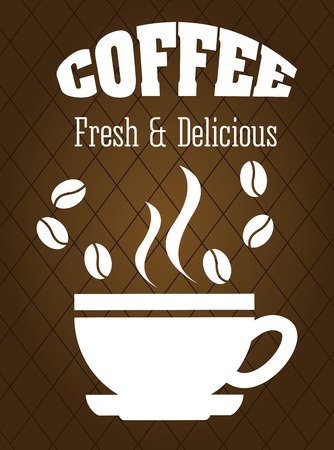Introduction to Supply Chains in the Coffee Industry
In the United States, coffee shops are a staple of daily life, fueling everyone from early risers to late-night students. Behind every cup, however, lies a complex supply chain that ensures beans, milk, pastries, and other essentials make it from their origins to your local café. For both franchise and independent coffee shops, navigating this supply chain is a crucial part of business success. The way cafés source their products can impact everything from cost and quality to customer loyalty and brand reputation. Understanding these supply chains—and the differences in how various types of cafés manage them—is essential for anyone in or entering the coffee industry. Whether it’s large franchises leveraging nationwide distribution networks or small independents hand-picking local suppliers, product sourcing decisions shape the entire customer experience and define the sustainability and profitability of a café’s operations.
2. Franchise Cafe Product Sourcing: Processes and Partnerships
Franchise cafes in the United States operate within a structured framework that prioritizes consistency, reliability, and brand integrity in their product sourcing strategies. Unlike independent cafes, franchise locations benefit from established processes and robust supplier partnerships that ensure uniform quality across all outlets. This system is designed to deliver the same customer experience—whether you visit a franchise cafe in New York or Los Angeles.
National Contracts and Centralized Procurement
A key advantage for franchise cafes is their ability to leverage national contracts with suppliers. These agreements typically guarantee stable pricing, consistent product availability, and streamlined logistics. By centralizing procurement through corporate headquarters or designated purchasing departments, franchises reduce variability and maintain control over ingredients, packaging, and equipment standards.
Typical Franchise Sourcing Structure
| Sourcing Element | Description | Benefit |
|---|---|---|
| National Supplier Contracts | Exclusive deals with large vendors for coffee beans, milk, bakery items, etc. | Cost savings and predictable supply chain |
| Centralized Distribution Centers | Products are shipped from regional hubs to local stores | Efficient inventory management and logistics |
| Standardized Product Specifications | Detailed guidelines for every ingredient and item used in-store | Uniform quality and customer experience |
| Corporate Oversight & Audits | Regular checks to ensure compliance with sourcing policies | Brand protection and operational consistency |
Leveraging Established Supplier Relationships
Franchises often cultivate long-term relationships with trusted suppliers, which can lead to favorable terms such as volume discounts or priority access during supply shortages. These partnerships provide a level of stability that independent operators may struggle to achieve. Additionally, franchisees benefit from the parent company’s expertise in vetting suppliers for food safety certifications, ethical sourcing practices, and logistical reliability—minimizing risks throughout the supply chain.

3. Independent Cafe Sourcing: Flexibility and Local Choices
Unlike franchise cafes that follow strict corporate guidelines, independent cafes enjoy a significant degree of freedom when it comes to sourcing their products. This flexibility allows local cafe owners to make choices based on quality, community values, and customer preferences rather than corporate mandates. Many independent cafes choose to partner with local coffee roasters, artisanal bakeries, and small-batch dairy suppliers. These partnerships not only support the local economy but also give the cafe a unique identity within its neighborhood.
By working with nearby vendors, independent cafes can offer seasonal specials and limited-edition items that reflect regional flavors or trends. For example, an independent shop in Portland might feature a single-origin espresso from a local micro-roaster or source pastries from a nearby family bakery. This creates a distinct sense of place for customers, making the cafe more than just a stop for coffee—it becomes part of the fabric of the community.
However, this freedom comes with challenges. Independent owners must invest time into building relationships with suppliers, vetting product quality, and managing multiple contracts and deliveries. There’s also greater exposure to price fluctuations and supply inconsistencies compared to franchises that benefit from bulk purchasing power. Still, for many independent operators, the ability to curate their menu and support other small businesses outweighs these hurdles. Their choices contribute to the diversity of America’s coffee culture, offering customers authentic alternatives to standardized chain offerings.
4. Cost, Quality, and Brand Identity
When it comes to sourcing products, franchise cafes and independent cafes often take very different approaches—each with its own unique impact on cost, quality, and brand identity. For franchises, bulk purchasing through established supply chains usually means lower costs per unit, allowing for standardized pricing across all locations. This consistency makes it easier to maintain predictable profit margins, but it can sometimes lead to compromises in quality or limit the ability to offer unique menu items tailored to local tastes.
Independent cafes, on the other hand, have more flexibility to source ingredients locally or from specialty suppliers. This can result in higher per-unit costs but may also elevate the perceived quality of their offerings. Customers who value artisanal or locally-sourced products are often willing to pay a premium, and this willingness supports both higher quality standards and a distinct brand identity rooted in community and craftsmanship.
Comparing Franchise vs. Independent Sourcing Strategies
| Franchise Cafes | Independent Cafes | |
|---|---|---|
| Cost Structure | Lower due to bulk purchasing agreements and national contracts | Higher, especially for small-batch or specialty goods |
| Product Quality | Consistent but may lack uniqueness; focused on reliability | Varied; can be higher with local or premium sourcing |
| Brand Identity | Uniform across all locations; built around familiarity and predictability | Unique; often emphasizes local flair, creativity, and personalized experience |
Impact on Customer Perception
The way each type of cafe sources its products directly influences how customers perceive them. Franchise cafes tend to attract those seeking a reliable experience—knowing that their favorite latte will taste the same wherever they go. Independent cafes build loyalty by offering something distinctive: whether its a single-origin coffee roasted locally or pastries made from ingredients sourced just miles away.
Strategic Takeaways
Ultimately, the decision between prioritizing cost savings or investing in quality becomes central to a cafe’s brand promise. Franchises lean heavily on efficiency and uniformity to reinforce their brand at scale, while independents use creative sourcing as a way to stand out and engage with their communities. Both strategies come with trade-offs that shape not only what’s served in the cup but also the stories that customers tell about their favorite cafes.
5. Challenges and Opportunities in Sourcing
Sourcing products for cafes—whether franchise or independent—comes with a unique set of challenges and opportunities that directly impact daily operations and long-term success. Supply disruptions are a common hurdle, especially in an era marked by global logistics issues, labor shortages, and fluctuating commodity prices. For franchises, the reliance on centralized suppliers can sometimes result in delays or shortages if there are interruptions higher up the supply chain. Independents, while more agile, may face difficulties securing consistent quality or competitive pricing due to smaller order volumes.
However, these challenges also open doors for innovation and differentiation. Franchises can leverage their scale to negotiate favorable terms with suppliers and invest in technology to predict and manage disruptions more effectively. They may also experiment with exclusive product lines or limited-time offers sourced through their established networks. On the other hand, independent cafes have the flexibility to partner with local roasters, bakeries, and farmers, allowing them to feature unique offerings that resonate with their community’s tastes and values. This ability to pivot quickly not only helps mitigate supply chain risks but also creates a compelling brand identity that sets them apart from larger competitors.
Both models must stay alert to changing consumer preferences and industry trends, such as increased demand for ethically sourced ingredients or eco-friendly packaging. By viewing sourcing obstacles as opportunities for creativity—whether through sustainable partnerships, inventive menu items, or enhanced supplier relationships—cafes can turn potential setbacks into strategic advantages in a highly competitive market.
6. Conclusion: Choosing the Right Sourcing Approach
When it comes to sourcing products for your café in the U.S., understanding the distinctions between franchise and independent models is crucial for long-term success. Franchise cafes typically benefit from established supply chains, negotiated pricing, and consistent product quality, making them ideal for owners who prioritize efficiency and brand consistency. In contrast, independent cafes have greater flexibility to curate local or specialty products, allowing for creativity and unique customer experiences—but they also face challenges such as higher costs and more complex logistics.
For any café owner, the key considerations in developing a sourcing strategy include aligning with business goals, knowing your customer base, managing costs, and ensuring supply reliability. Franchises may find value in leveraging centralized procurement systems, while independents might capitalize on direct relationships with local producers or specialty vendors. Ultimately, there’s no one-size-fits-all solution—the best approach depends on whether you value consistency and scale or uniqueness and adaptability.
As you navigate your options, be sure to evaluate supplier reliability, pricing transparency, delivery schedules, and the ability to adapt to market trends. By carefully weighing these factors against your café’s brand identity and operational needs, you’ll be better equipped to choose a sourcing strategy that not only supports your bottom line but also resonates with your customers in today’s competitive U.S. coffee scene.


